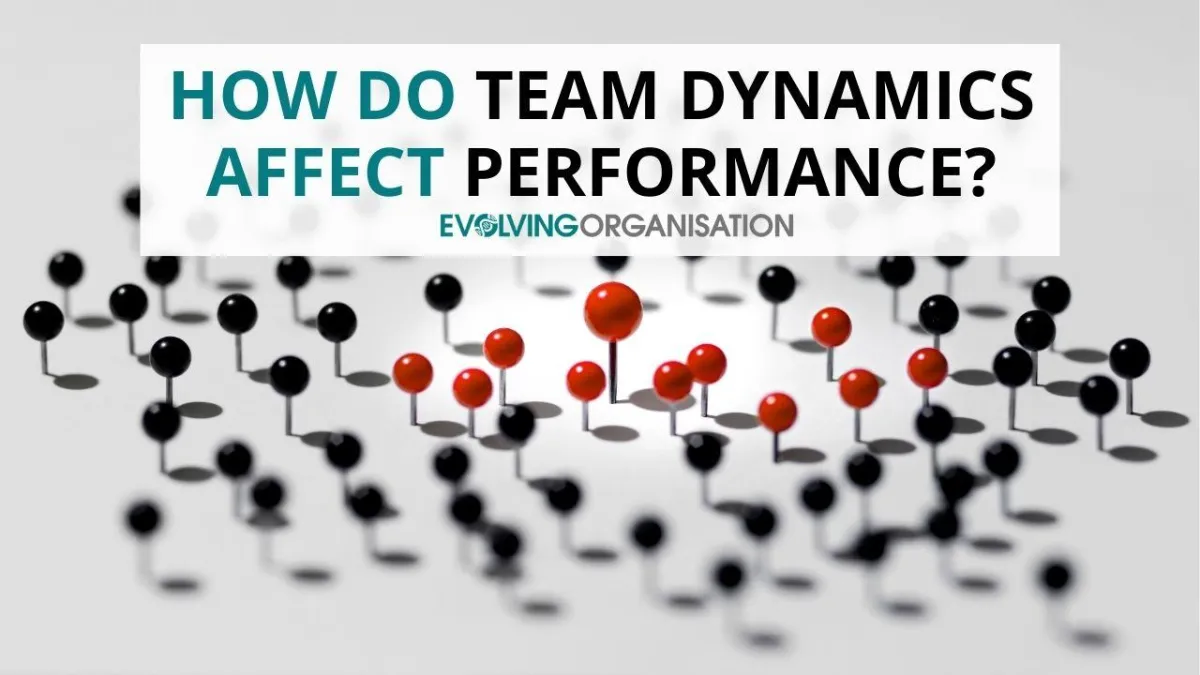
How Do Team Dynamics Affect Performance
Team dynamics directly influence how well a team performs. When dynamics are healthy, teams communicate effectively, collaborate seamlessly, and adapt quickly to challenges. Conversely, poor team dynamics lead to misunderstandings, conflicts, and inefficiency.
Understanding and nurturing positive dynamics is essential for building high-performing teams, whether they operate hierarchically, collaboratively, or as Self-Managing Teams. This blog explores how different team structures—hierarchical, collaborative, and Self-Managing Teams—shape team dynamics, impact performance, and provide practical strategies for building, maintaining, and improving high-performing teams.
What Are Team Dynamics?
Team dynamics refer to the patterns of interactions, relationships, and behaviours among team members. Most importantly, they shape how people feel in a team. Also, information flows, how decisions are made, how conflicts are resolved, and how goals are achieved. Different team structures foster different dynamics:
Hierarchical teams often have clear authority lines, with leaders directing tasks and decisions. Works fine in relatively stable and simple environments where people accept being told what to do or having authority delegated, but the managers retain the final say.
Collaborative teams emphasise open communication, shared responsibility, and collective problem-solving. Often, there’s an approach of ‘all voices should be heard’, which is a noble ideal but can be time-consuming and impossible in practice all of the time.
Self-managing teams operate with distributed authority, making decisions individually in clearly defined roles where appropriate, collectively using a clearly defined process when needed, and adapting rapidly.
For example, a traditional corporate sales team has a manager assigning targets. In contrast, a more collaborative team would discuss and decide them together. A self-managing software team has individuals decide their priorities themselves whilst aligning with the priorities or strategies set by Circle Leads.
Impact of Team Dynamics on Performance

Healthy team dynamics improve productivity, innovation, and morale. They foster trust, accountability, and clear communication. For instance, Google’s Aristotle project found that psychological safety—an element of good team dynamics—is the most critical factor for team success. Teams where members feel safe to share ideas and admit mistakes are more innovative and resilient.
Poor dynamics, however, cause misunderstandings, reduce trust, and lead to conflicts. These issues slow decision-making, decrease motivation and undermine results. For example, a project team with frequent conflicts and unclear roles may miss deadlines and produce subpar work.
What Are the Negative Impacts of Poor Team Dynamics?
Miscommunication: This leads to errors and duplicated efforts.
Conflict: It creates a toxic environment and reduces collaboration.
Lack of trust: Members withhold information and avoid taking risks.
Low motivation: Frustration and disengagement increase.
Reduced productivity: Tasks take longer, and quality suffers.
For example, a marketing team with poor communication might launch campaigns with inconsistent messaging, damaging the brand's reputation.
How to Recognise Poor Team Dynamics

Frequent misunderstandings or conflicts.
Lack of engagement or participation.
Low trust and openness.
Resistance to change or new ideas.
Missed deadlines and poor quality work.
One sign is when team members avoid discussions or withhold feedback, which indicates a lack of psychological safety.
Key Factors That Enhance Team Dynamics
Clear roles and responsibilities: Everyone knows what they are accountable for.
Open communication: Members freely share ideas and concerns.
Trust and respect: Building trust encourages risk-taking and innovation.
Shared purpose: A common goal aligns efforts.
Effective decision-making processes: Clarity about how decisions are made reduces conflict.
For example, implementing regular check-ins and transparent decision protocols enhances trust and clarity.
Examples of Great Team Dynamics
- A hierarchical sales team with clear targets and structured reporting, ensuring consistency and accountability.
- A collaborative product team that holds weekly retrospectives, openly discusses challenges and celebrates successes.
- A self-managing software team that uses daily stand-ups and visual Kanban boards to coordinate work and adjust priorities in real time.
These teams demonstrate high levels of trust, communication, and adaptability.
Why Is Having Good Team Dynamics Important?

Good team dynamics are the foundation of high performance. They foster innovation, improve problem-solving, and increase engagement. Teams with healthy dynamics are more resilient to change and can adapt quickly in complex environments. For example, organisations that cultivate psychological safety see higher employee retention and better business results.
Top Tips for Improving Your Team Dynamics
1. Clarify roles and responsibilities to reduce confusion.
2. Encourage open and honest communication through regular meetings and feedback.
3. Build trust by fostering transparency and consistency.
4. Create a shared purpose that motivates everyone.
5. Implement visual management tools like Kanban or shared dashboards to enhance transparency.
6. Promote a culture of learning where mistakes are seen as opportunities to grow.
7. Recognise and celebrate successes to boost morale.
By focusing on these areas, you can transform your team’s dynamics, leading to higher performance and greater satisfaction among team members.
Conclusion:
Strong team dynamics are the glue that holds high-performing teams together. Whether your team is hierarchical, collaborative, or self-managing, fostering trust, clarity, and open communication is key to achieving sustained success in today’s complex and fast-changing world.
Suppose you want to learn these practices in depth. In that case, programs like Team Clarity & Faster Decision-Making and The Meetings Revolution offer step-by-step guidance and practical tools to help your team make these shifts confidently and effectively.
When you move beyond hierarchy and empower your team to own their roles, communicate openly, and adapt quickly, you don’t just improve performance—you create the foundation for lasting success in a fast-changing world.
This blog serves as a continuation of our commitment to improving performance and decision-making within organisations. Stay tuned for our next instalment, where we will delve deeper into a range of practical tools that do this.
For more insights and resources, visit our website. Together, let’s evolve and adapt to the challenges of our dynamic world and build a better, more collaborative future—together.


